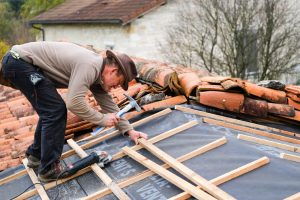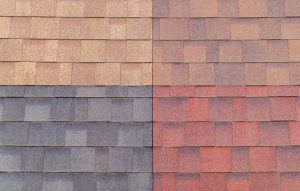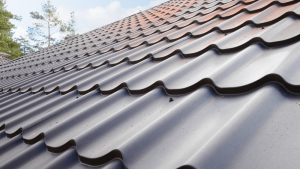The San Antonio Roofer Guide to Historic Homes
Posted on Thursday, June 8th, 2023 at 8:00 am
San Antonio, Texas is a culturally rich city that is known for a mix of attractions. You can visit the staple of the Alamo, take a stroll along the San Antonio River Walk, or grab some food at a wide range of restaurants. You can even visit the city’s large number of historic districts. Including both commercial and residential properties, these districts are recognized on local and national levels. Across San Antonio, there are early 20th-century Craftsman bungalows and gorgeous Victorian-era mansions.
These buildings have withstood the test of time. But all buildings are capable of experiencing damage—and that includes their roofs. Preserving the roofs of these historic homes is crucial for the sake of their structural integrity. Luckily, professional roofers are willing and ready to take on the task of repairing and restoring those roofs while maintaining their charm and character. Let’s explore what a San Antonio roofer is capable of when it comes to historic properties.
Architectural Eras in Texas Roofing
According to the Texas Historical Commission, around the time when Texas became a state, there were several styles of architecture (and, thus, roofs) that were being built. One was Greek Revival, which came with a gable or hipped roof with a low pitch. You see this type of roof used in fraternity and sorority houses. The Second Empire style was also popular with its mansard roof with dormer windows, and the minimalist National Folk style with its medium-pitched roof. Over time, with the construction of new residential and commercial buildings, Texas has certainly adapted. In fact, Minimal Traditional architecture has been popular for the past century! But we can still find beautifully crafted roofs of long-gone styles throughout historic districts.
Steps for Renovating Historic Roofs
Back in 2012, the Office of Historic Preservation (OHP) announced the adoption of the City of San Antonio Historic Design Guidelines. For over a decade now, these guidelines have served to ensure the compatibility between new development and the existing historic environment. When undergoing a roof renovation, expect to follow these four steps while staying in line with the guidelines:
Get an Experienced Roofer
In general, you should not attempt to repair your roof on your own. This is especially true when you have a historic home. You need to work with a reputable San Antonio roofer that is capable of preserving the home’s architectural integrity. They are trained to handle materials and equipped with the right tools to get the job done. A good roofer will comply with preservation guidelines throughout the restoration.
Assess the State of the Roof
Every roof experiences wear and tear over time due to exposure to the elements. If left unchecked, this could result in deterioration, leaks, or structural issues. When a licensed San Antonio roofer takes the time to thoroughly inspect your roof, they will determine whether the issues can easily be patched or are sizeable enough to require the installation of a new roof. The hope is that the assessment will show that your historic home has not faced neglect for too long.
Learn About Your Roof’s History
Because historic homes often have unique design elements that contribute to their significance, you want to ensure that you retain them as much as possible. Knowing your roof’s history allows you to better protect the property’s cultural heritage at large. This is because you and your San Antonio roofer can work together to identify its original features. So, take some time to gather documentation from around the time of its construction, then consult with architects and historians to guide your restoration project.
Undergo the Necessary Repairs
There could be moisture issues, broken shingles, or excessive debris and the same point would remain… No matter the situation, a skilled San Antonio roofer can address your roof’s weaknesses. They will make sure that you have adequate ventilation and flashing, for example. But beyond that, your professional roofer can repair or replicate decorative features that give the roof its historical character. If they are unable to acquire the exact materials needed, they will need to locate identical substitutes that are compatible with the rest of the roof.
Historic Roofing Materials
In order to respect the authenticity of a historic home, a San Antonio roofer will be considerate of the materials used. On top of familiarizing themselves with historical techniques, they have to be knowledgeable about local traditions and the city’s geographical location. Wherever you are in the country, the roof of your historic home might be made out of the following:
Wood Shingles
Between the earliest colonial days through the 19th century, wood was the most common roofing material. It can be found in homes of the Georgian, Federal, and Greek revival styles, just to name a few. If you are planning to revive your historic home’s wooden roof, you are going to need to determine what type of wood was available during the time it was built. However, in the event that your wooden roof is deteriorating, it may be best to simply replace it with a modern architectural roof.
Metal

Copper rolls and sheets started being used in the late-1700s. It was among the most popular choices for metal roofs because of its durability and subsequent long lifespan. Across the board, though, metal holds up much better than wood. Sheet-metal roofing, which was the first type of roofing produced in factories, didn’t emerge until the Federal era. Southern Victorian homes, especially, utilized metal as a roofing material, and it is often recommended for Italianate homes.
Clay Tiles
Typically made from terra cotta, clay tiles are known for their Spanish influence. Like metal roofs, clay roofs are known for having a long lifespan. They are also resistant to fire and non-combustible, which makes them an especially good choice for areas that are prone to wildfires. Clay tiles are a definitive characteristic of Mission-style homes, which gained popularity during the 20th century. The most common tiles included “S” and convex shapes.
Slate
Although costly to manufacture and transport due to its heaviness, slate is a material that is advantageous for its minimal requirements for maintenance. It can also last for over a century, making it quite cost-effective. Plus, it is a sustainable material considering you can recycle it! Slate started off as very rare but, thanks to the railroad system, more and more people were able to get access to it. This material pairs well with European, Colonial, and French-style homes.
Contact the San Antonio Roofers at Kidd Roofing
Kidd Roofing has offered professional residential and commercial roofing services to the San Antonio area since 1982. Our highly skilled team is committed to providing you with exceptional workmanship from beginning to end. Not only will complete your project with efficiency, but with safety. We strive for excellence in everything we do, whether it be new roof installations or roof repairs after hail storms. If you have a historic home that is in need of a roofing transformation, it will be in good hands with Kidd Roofing. Send us a message to get started.
